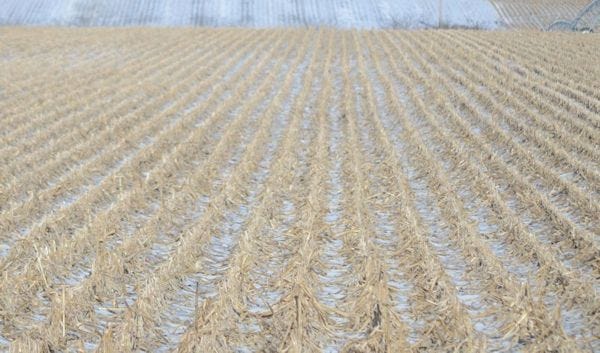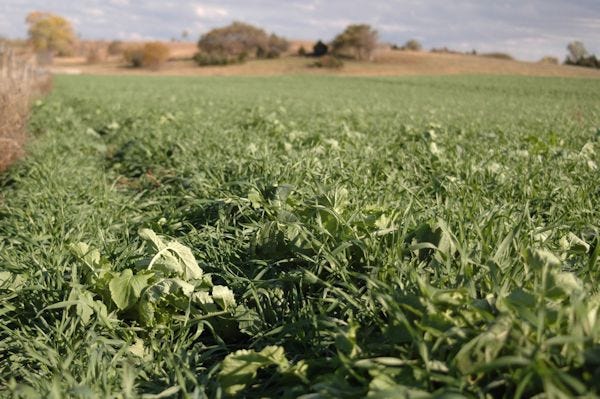
Not long ago, I finally made the pilgrimage down to Beatrice to Homestead National Monument – the Homestead Heritage Center and national park situated among over 100 acres of tallgrass prairie that commemorate the passage of the 1862 Homestead Act, which allowed settlers to lay their claim to land in exchange for five years of cultivation and improvement of the property. It's also the location of the first claim made under the Homestead Act by Daniel Freeman.

With more food to feed soil life, active microbial life ensures uniform residue breakdown. Meanwhile, living roots in the soil serve as a host for mycorrhizal fungi that produce glomalin, meaning improved aggregate stability, greater infiltration and water-holding capacity, and better nutrient and water uptake.
Of course, no historical account of the settlement of the Plains would be complete without addressing the Dust Bowl and one of the biggest contributing factors – the misguided belief that "rain follows the plow", another highlight of the Heritage Center. It's a lesson some would argue we haven't quite learned yet, especially after the extreme weather we saw last spring, when more than a few tilled fields, especially in southeast Nebraska saw excessive amounts of runoff, soil sloughing, and sidewall compaction.
In 2015, we heard a lot about the importance of being adaptive and dynamic in the wake of climate change and weather extremes, both feast and famine. And that resiliency also helps adapt when margins are tight.
For example, uniformity is an oft-cited rule of thumb when it comes to achieving higher yields (not to mention getting the most return from your investment), and as you'll read about in this issue, Paul Jasa, University of Nebraska Extension engineer would note it takes "uniformity all year-round."

While tillage and residue removal may seem like the answer to uniformity, leaving residue at a uniform height in the field under long-term no-till ensures the soil surface warms up uniformly come spring.
That is to say, while tillage and residue removal may seem like the answer to uniformity, leaving residue at a uniform height in the field under long-term no-till ensures the soil surface warms up uniformly come spring. With more food to feed soil life, active microbial life ensures uniform residue breakdown. Meanwhile, living roots in the soil serve as a host for mycorrhizal fungi that produce glomalin, meaning improved aggregate stability, greater infiltration and water-holding capacity, and better nutrient and water uptake.
That improved infiltration reduces risk of water, soil, and nutrients running off during extreme rainfall, and improved water-holding capacity and soil structure means more soil moisture is available to the plant during years of drought – uniformity and resiliency in the wake of either extreme.
Not only does it mean fewer passes in the field, but it can also mean less water is required to meet the crop's needs. Throw cover crops into the mix with a systems approach over multiple cropping seasons, and you've got even greater potential to cut back on inputs by improving infiltration and having living roots to host mycorrhizal fungi in the soil year-round.

Throw cover crops into the mix with a systems approach over multiple cropping seasons, and you've got even greater potential to cut back on inputs by improving infiltration and having living roots to host mycorrhizal fungi in the soil year-round.
USDA Economic Research Service surveys continue to show no-till practices are being used on more acres (over half of U.S. cropland acres), and it comes as no surprise that Nebraska ranked second under states with the most no-till acres according to the 2012 USDA Census of Agriculture.
One of the hurdles in adopting no-till and cover crop practices, as Paul Jasa has noted on several occasions, is it's tough for producers to quantify the benefits of soil health, especially over a one-year analysis. It takes a systems approach – looking out beyond just one cropping season, adding diversity to the rotation with different cover crops species (maybe even grazing cattle), and realizing the long-term benefits. While managing for extremes and maximizing return on investment will definitely be on everyone's radars this year, resiliency isn't always something that can be accomplished overnight.
About the Author(s)
You May Also Like






